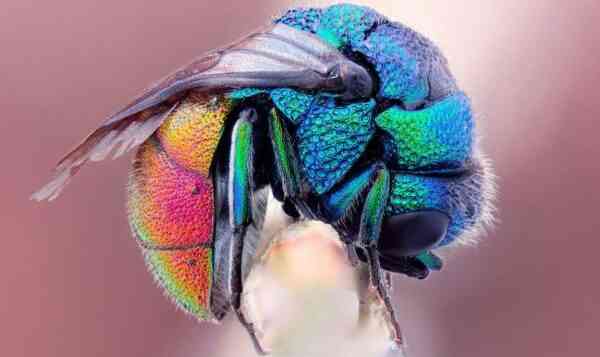There are such an incredible variety of insects in the world that not all of them have been studied so far. In impenetrable forests and jungles, new species are still discovered from time to time, which amaze scientists, and already known species sometimes change under the influence of the external environment. Evolutionary processes do not stop, it’s just that it is far from always possible to track the changes caused by them over several generations.
Interesting facts about insects
- The sizes of their smallest representatives do not exceed 0.2 millimeters in adults.
- The first insects appeared on Earth over 400 million years ago. They survived all 5 mass extinctions and survived even when countless thousands of other species died out.
- Insects are the main food for each other and for many birds. Spiders alone eat more other insects every year than all people living today weigh (interesting facts about spiders).
- Approximately 2/3 of all insects in the world eat only plant foods. The rest are partially or completely predators.
- The strongest insect, and in general the most powerful living creature in the world, taking into account the size and weight, is the ant.
- The taste organs of butterflies are very unusually located. They have them on their hind legs.
- The wingspan of the butterflies can exceed 30 centimeters, so from afar they are often confused with birds.
- In total, a little more than 1 million species of insects. But a much larger number of them still remain unexplored.
- Among all classes of animals, they are the most numerous.
- Certain insects live on all islands and continents without exception. They are even in Antarctica (interesting facts about Antarctica).
- In many countries, insects are eaten. Especially in Asia, Africa and partly in South America.
- From the point of view of saturation with protein and useful substances, many insects are very useful.
- Many of them are extremely prolific. Ordinary cockroaches, for example, lay up to 2 million eggs a year.
- Bees kill many more people every year than sharks, tigers or bears with wolves. And even more than poisonous snakes.
- The fastest insect in the world is the dragonfly. When flying, it can reach speeds of up to 55 km/h.
- Some species of moth get the moisture they need by drinking secretions from the lacrimal glands of animals.
- The only insect that can turn its head is the praying mantis (interesting facts about praying mantises).
- Scientists estimate that there are more than 5 million species of insects on Earth that have not yet been discovered.
- From mosquito bites in India alone kill over a million people every year because mosquitoes carry a host of dangerous diseases.
- Experiments have shown that wood-eating termites, accompanied by heavy music like hard rock, gnaw wood almost twice as fast.
- In one species of spider, the first thing they do after birth is to eat their own mother after hatching.
- A headless cockroach can live another week or more.
- The world’s largest beetles, titans, grow up to 17 centimeters in length.
- Each eye of a dragonfly consists of approximately 20,000 tiny lenses.
- The lifespan of some species of dragonflies does not exceed 1 day.
- Some of these creatures, for example, ticks, are able to do without food for up to 8-9 years. And scorpions can withstand such a diet for up to 1.5-2 years.
- The diversity of insect species is evidenced by the fact that there are almost as many species of ants on Earth as there are of all bird species combined.
- Ants never sleep, throughout their lives (interesting facts about ants).
- Flies usually spend their entire short lives near the place where they were born, if the wind does not blow them somewhere far away.
- The most dangerous insect killer is the African tsetse fly. Every year, it kills tens of thousands of people and countless livestock.
- The largest insect in the world is a giant weta, resembling a grasshopper or cricket. An adult weighs about 70 grams, which is three times the weight of an ordinary mouse.
- To produce 1 kg of honey, a bee will need to make an average of 20,000,000 flights from the hive to the flowers and back. It is clear that so many individual bees simply cannot live.
- Many insects have more than two eyes. The aforementioned bees have, for example, 5. And spiders have even more, but their eyesight is very poor.
